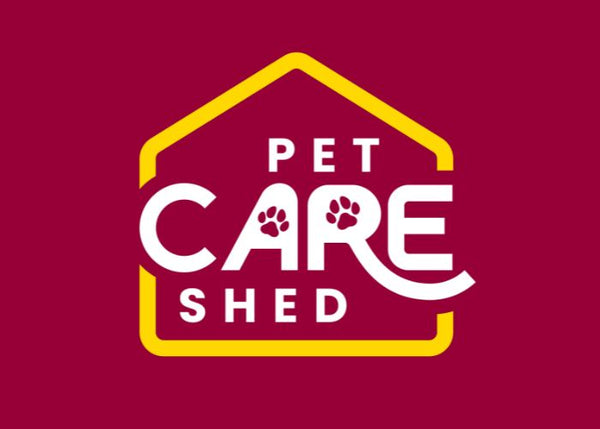Pet Supplies

Lost and Stolen Pets: Your Legal Rights and Ste...
Owning a pet is a cherished part of life for millions of Australians. Yet, few experiences are as distressing as the sudden disappearance of a beloved companion. Whether a pet...
Lost and Stolen Pets: Your Legal Rights and Ste...
Owning a pet is a cherished part of life for millions of Australians. Yet, few experiences are as distressing as the sudden disappearance of a beloved companion. Whether a pet has simply wandered away or is suspected to have been stolen, the uncertainty can be overwhelming. In these critical moments, knowing your legal rights and practical responsibilities is not only reassuring but essential for maximising your chances of being reunited with your pet.

Transporting Pets in Vehicles: Legal Rules and ...
Australians are renowned animal lovers, and pets often accompany their families on trips ranging from routine errands to cross-country holidays. However, the act of transporting pets in vehicles is subject...
Transporting Pets in Vehicles: Legal Rules and ...
Australians are renowned animal lovers, and pets often accompany their families on trips ranging from routine errands to cross-country holidays. However, the act of transporting pets in vehicles is subject to a complex web of national, state, and local regulations. Understanding these rules is not only a matter of legal compliance but essential for the wellbeing of your pets—and for everyone sharing the road.
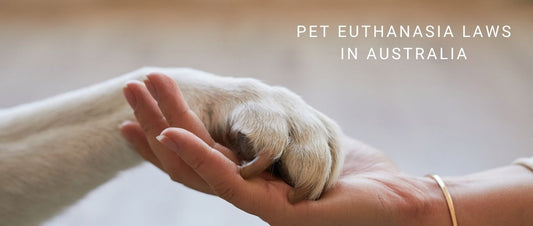
Pet Euthanasia Laws in Australia: Understanding...
Deciding to euthanize a beloved pet is among the most difficult decisions an Australian pet owner may face. It is a choice that not only carries emotional weight but is...
Pet Euthanasia Laws in Australia: Understanding...
Deciding to euthanize a beloved pet is among the most difficult decisions an Australian pet owner may face. It is a choice that not only carries emotional weight but is also subject to a complex legal and ethical framework designed to protect both animals and humans. Australia’s pet euthanasia laws are intended to ensure that any act of ending an animal’s life is carried out humanely, with respect, and according to strict professional and legal standards.

Bearded Collies in Australia: Lively Herding Do...
The Bearded Collie—often affectionately called the “Beardie”—is a medium-sized, long-haired herding breed originally from Scotland. Known for its intelligence, boundless enthusiasm, and distinctive shaggy appearance, the Bearded Collie stands out...
Bearded Collies in Australia: Lively Herding Do...
The Bearded Collie—often affectionately called the “Beardie”—is a medium-sized, long-haired herding breed originally from Scotland. Known for its intelligence, boundless enthusiasm, and distinctive shaggy appearance, the Bearded Collie stands out not just for looks but for a centuries-old reputation as a working sheepdog. This breed belongs to the herding group and is deeply woven into agricultural history, once relied upon by Scottish farmers to manage livestock in challenging terrain.

Bernese Mountain Dogs in Australia: Gentle Gian...
The Bernese Mountain Dog, affectionately known as the “Berner,” is a breed that brings together the majestic presence of a working dog and the devoted heart of a companion animal....
Bernese Mountain Dogs in Australia: Gentle Gian...
The Bernese Mountain Dog, affectionately known as the “Berner,” is a breed that brings together the majestic presence of a working dog and the devoted heart of a companion animal. Originating from the cold valleys and mountainous terrain of Switzerland, this breed was first developed as a versatile farm dog—capable of pulling carts, driving cattle, and serving as a loyal family guardian. Today, the Bernese has found a new home among Australian families seeking a gentle, trustworthy companion with a distinctive European pedigree.

Cairn Terrier Care Guide for Australia: The Tou...
The Cairn Terrier is one of the oldest terrier breeds, renowned for its rugged nature, intelligence, and plucky character. Originating in the Scottish Highlands, these small but determined dogs were...
Cairn Terrier Care Guide for Australia: The Tou...
The Cairn Terrier is one of the oldest terrier breeds, renowned for its rugged nature, intelligence, and plucky character. Originating in the Scottish Highlands, these small but determined dogs were bred to root out foxes and other vermin from rocky cairns—hence their name. As part of the terrier group, Cairn Terriers are celebrated for their working dog heritage, strong prey drive, and remarkable adaptability.

Australian Shepherds in Australia: Intelligent ...
Despite the name, the Australian Shepherd—commonly called the “Aussie”—originated in the United States, not Australia. Their ancestors were believed to have traveled from Australia with Basque shepherds before being refined...
Australian Shepherds in Australia: Intelligent ...
Despite the name, the Australian Shepherd—commonly called the “Aussie”—originated in the United States, not Australia. Their ancestors were believed to have traveled from Australia with Basque shepherds before being refined into the breed we know today in the American West. Classified under the herding dog group, the Aussie was specifically bred for intelligence, stamina, and versatility, becoming an indispensable partner on ranches and farms.

Affenpinscher Dogs in Australia: The Playful “M...
The Affenpinscher, often referred to as the “Monkey Dog”, is a small yet fiercely confident breed that traces its origins back to Germany. Its name comes from the German word...
Affenpinscher Dogs in Australia: The Playful “M...
The Affenpinscher, often referred to as the “Monkey Dog”, is a small yet fiercely confident breed that traces its origins back to Germany. Its name comes from the German word “Affe”, meaning monkey — a fitting title given the breed’s expressive face and playful antics. Historically, this breed was developed as a rat-catching terrier in stables and kitchens, eventually gaining favour among European aristocrats as a lapdog with spunk.

Finnish Spitz in Australia: Barking, Grooming, ...
The Finnish Spitz is a distinctive and rare breed, most easily recognised by its fox-like face, golden-red coat, and proudly curled tail. Known affectionately as the "Barking Bird Dog", this...
Finnish Spitz in Australia: Barking, Grooming, ...
The Finnish Spitz is a distinctive and rare breed, most easily recognised by its fox-like face, golden-red coat, and proudly curled tail. Known affectionately as the "Barking Bird Dog", this breed was originally developed in the forests of Finland for locating game birds and alerting hunters with its clear, repetitive bark. Unlike most working breeds that use physical contact or herding techniques, the Finnish Spitz’s primary hunting tool was its voice.

Soft-Coated Wheaten Terrier Guide: Is This Hypo...
The Soft-Coated Wheaten Terrier (SCWT) is a charming and spirited terrier breed with deep roots in Irish agricultural history. Originally bred to serve as an all-purpose farm dog, the Wheaten...
Soft-Coated Wheaten Terrier Guide: Is This Hypo...
The Soft-Coated Wheaten Terrier (SCWT) is a charming and spirited terrier breed with deep roots in Irish agricultural history. Originally bred to serve as an all-purpose farm dog, the Wheaten handled tasks such as herding, guarding property, and keeping vermin in check. Recognised for its distinctive silky coat and jovial temperament, the breed has evolved into a beloved companion around the world.
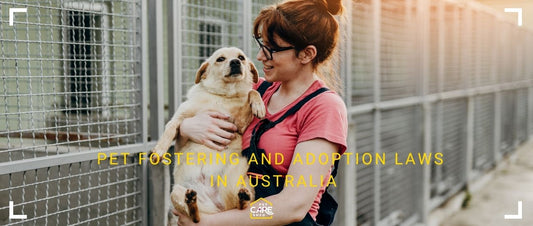
Pet Fostering and Adoption Laws in Australia: W...
Welcoming a pet into your home, whether through fostering or adoption, is a deeply rewarding experience. For many Australians, opening their hearts and homes to animals in need is both...
Pet Fostering and Adoption Laws in Australia: W...
Welcoming a pet into your home, whether through fostering or adoption, is a deeply rewarding experience. For many Australians, opening their hearts and homes to animals in need is both a personal commitment and a community service. However, this act of kindness is not without its legal obligations. Understanding the legal landscape is essential—not only to protect yourself and your family, but to ensure the welfare and rights of the animals in your care.

English Setter Dogs in Australia: Graceful Comp...
The English Setter is a breed that epitomises grace, intelligence, and gentle companionship—qualities that have made it a cherished presence in Australian homes and fields. Originally bred in Britain during...
English Setter Dogs in Australia: Graceful Comp...
The English Setter is a breed that epitomises grace, intelligence, and gentle companionship—qualities that have made it a cherished presence in Australian homes and fields. Originally bred in Britain during the 16th century, the English Setter was developed as a skilled bird dog, prized for its ability to “set” or crouch low upon locating game birds, enabling hunters to cast their nets. Over time, this method evolved with the adoption of firearms, but the breed’s keen instincts, refined manners, and partnership with humans remained at the core of its identity.

Pet Import and Quarantine Laws: Bringing Animal...
Australia’s reputation as a “biosecurity island” is not just a matter of national pride—it is a necessity. The continent’s long geographical isolation has resulted in an environment with unique wildlife,...
Pet Import and Quarantine Laws: Bringing Animal...
Australia’s reputation as a “biosecurity island” is not just a matter of national pride—it is a necessity. The continent’s long geographical isolation has resulted in an environment with unique wildlife, free from many pests and diseases found elsewhere in the world. For this reason, importing pets into Australia is far more complex and tightly regulated than in most other countries.

Afghan Hound in Australia: Grooming, Temperamen...
The Afghan Hound is one of the most visually captivating and ancient dog breeds in the world. Known for its flowing, silky coat and proud, almost feline bearing, this breed...
Afghan Hound in Australia: Grooming, Temperamen...
The Afghan Hound is one of the most visually captivating and ancient dog breeds in the world. Known for its flowing, silky coat and proud, almost feline bearing, this breed combines physical elegance with a deeply independent personality. While its beauty turns heads, it's the Afghan’s unique history and behaviour that make it truly remarkable—especially for Australian owners seeking a graceful yet unconventional companion.
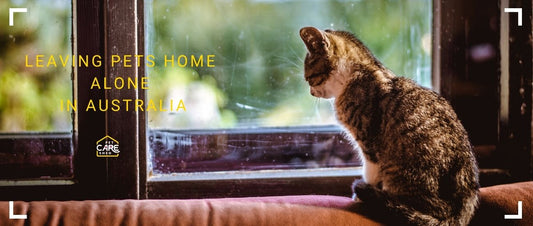
Leaving Pets Home Alone: What Australian Law Sa...
For millions of Australians, pets are cherished family members. Yet the reality of busy modern life—work, travel, emergencies—often means our pets spend time alone at home. This raises an important...
Leaving Pets Home Alone: What Australian Law Sa...
For millions of Australians, pets are cherished family members. Yet the reality of busy modern life—work, travel, emergencies—often means our pets spend time alone at home. This raises an important legal and ethical question: How long is too long? At what point does leaving a pet unattended cross the line into neglect under Australian law?

Shar-Pei Dogs in Australia: Wrinkled Charm, Uni...
The Shar-Pei stands as one of the world’s most visually distinctive dog breeds, instantly recognisable for its deeply wrinkled skin and dignified, almost stoic expression. This ancient breed, whose history...
Shar-Pei Dogs in Australia: Wrinkled Charm, Uni...
The Shar-Pei stands as one of the world’s most visually distinctive dog breeds, instantly recognisable for its deeply wrinkled skin and dignified, almost stoic expression. This ancient breed, whose history stretches back over 2,000 years in China, was originally developed for a unique set of purposes—serving as a guard dog, hunter, and even a fighting dog in rural Chinese villages. While its ancestors lived a rugged and practical life, the modern Shar-Pei is celebrated as a loyal family companion, particularly in Australia where its unusual looks and independent nature set it apart from more mainstream breeds.

Norwegian Elkhound in Australia: Ancient Hunter...
The Norwegian Elkhound (Norsk Elghund) is not your average family dog—it carries with it a lineage that stretches back over a thousand years. Regarded as one of the most ancient...
Norwegian Elkhound in Australia: Ancient Hunter...
The Norwegian Elkhound (Norsk Elghund) is not your average family dog—it carries with it a lineage that stretches back over a thousand years. Regarded as one of the most ancient Nordic breeds, this dog was a trusted companion to Vikings, a formidable hunter of large game, and a loyal guardian of Scandinavian homesteads. But beyond its rugged past lies a complex and adaptable dog that’s now finding its place in modern Australian homes.
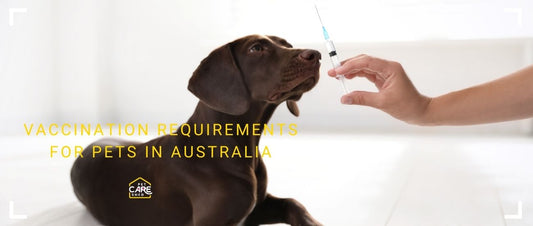
Vaccination Requirements for Pets in Australia:...
The importance of vaccinating pets in Australia cannot be overstated. Vaccines are a cornerstone of responsible pet ownership, protecting not only individual animals but also the wider community from dangerous...
Vaccination Requirements for Pets in Australia:...
The importance of vaccinating pets in Australia cannot be overstated. Vaccines are a cornerstone of responsible pet ownership, protecting not only individual animals but also the wider community from dangerous and sometimes fatal diseases. Yet, there remains significant confusion around exactly what is required by law, what is strongly recommended by veterinary experts, and how these requirements differ across Australia’s states and territories.

Pet Ownership Laws in Australia: What Every New...
Pet ownership is a cherished part of life for millions of Australians. Whether welcoming a playful puppy, a curious kitten, or any companion animal into your home, the rewards are...
Pet Ownership Laws in Australia: What Every New...
Pet ownership is a cherished part of life for millions of Australians. Whether welcoming a playful puppy, a curious kitten, or any companion animal into your home, the rewards are immense—but so are the responsibilities. Australia’s legal framework for pet ownership is among the most comprehensive in the world, shaped by a commitment to animal welfare, public safety, and responsible community living.

English Springer Spaniel in Australia: Family C...
The English Springer Spaniel is one of the oldest gun dog breeds, dating back several centuries in England. Bred primarily for flushing game birds from dense brush, the Springer earned...
English Springer Spaniel in Australia: Family C...
The English Springer Spaniel is one of the oldest gun dog breeds, dating back several centuries in England. Bred primarily for flushing game birds from dense brush, the Springer earned its name from its ability to "spring" birds into the air for hunters. Over time, this breed evolved into two distinct lines: the working (field) line and the show (bench) line—each with subtle differences in appearance, drive, and purpose.

Pet Ownership Laws for Strata and Apartment Dwe...
With Australia’s growing urbanisation and the rise of high-density living, more Australians are calling apartments and strata-titled properties home than ever before. For pet lovers, this shift raises important questions:...
Pet Ownership Laws for Strata and Apartment Dwe...
With Australia’s growing urbanisation and the rise of high-density living, more Australians are calling apartments and strata-titled properties home than ever before. For pet lovers, this shift raises important questions: Can I have a pet in my apartment? What are my rights if the building rules seem unfair? How do I balance my responsibilities as a pet owner with respect for neighbours and common property?

Brussels Griffon in Australia: Big Personality ...
This comprehensive guide explores the Brussels Griffon, a rare and emotionally intelligent toy breed gaining popularity in Australia. Known for its expressive face, deep loyalty, and human-like sensitivity, the Griffon...
Brussels Griffon in Australia: Big Personality ...
This comprehensive guide explores the Brussels Griffon, a rare and emotionally intelligent toy breed gaining popularity in Australia. Known for its expressive face, deep loyalty, and human-like sensitivity, the Griffon thrives in homes where companionship, structure, and emotional connection are prioritised.
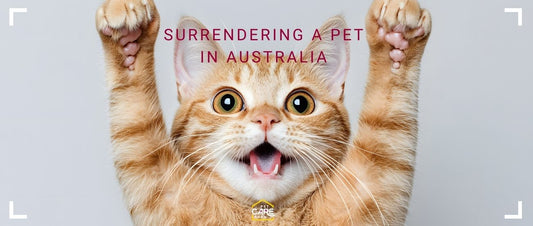
How to Legally Surrender a Pet in Australia: St...
Surrendering a pet is a deeply personal and often distressing decision for any Australian pet owner. Life circumstances can change suddenly—unforeseen housing issues, financial hardship, medical emergencies, or behavioural challenges...
How to Legally Surrender a Pet in Australia: St...
Surrendering a pet is a deeply personal and often distressing decision for any Australian pet owner. Life circumstances can change suddenly—unforeseen housing issues, financial hardship, medical emergencies, or behavioural challenges may make it impossible for some individuals or families to continue caring for their animals. In such moments, it is crucial to understand that surrendering a pet is not simply a private matter; it is a regulated process under Australian law, designed to protect both animals and the community.

Chihuahua Dog Breed Guide: Temperament, Care, a...
Chihuahuas are renowned for their distinctive character and undeniable charm. Originally hailing from Mexico, these tiny canines have not only won hearts around the globe but have also become a...
Chihuahua Dog Breed Guide: Temperament, Care, a...
Chihuahuas are renowned for their distinctive character and undeniable charm. Originally hailing from Mexico, these tiny canines have not only won hearts around the globe but have also become a cherished companion for many Australian pet lovers. Despite their modest size, Chihuahuas are celebrated for their commanding presence, vibrant energy, and a personality that often defies their diminutive stature.
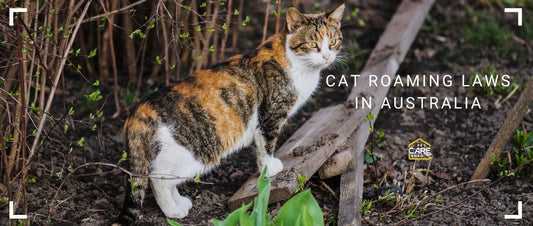
Cat Roaming Laws in Australia: Is It Legal to L...
The question of whether it is legal to let your cat roam freely outdoors is one of the most debated topics among Australian pet owners. With Australia’s unique wildlife, dense...
Cat Roaming Laws in Australia: Is It Legal to L...
The question of whether it is legal to let your cat roam freely outdoors is one of the most debated topics among Australian pet owners. With Australia’s unique wildlife, dense urbanisation, and evolving animal welfare standards, the practice of allowing cats to wander unsupervised is rapidly changing—and, in many cases, facing increasing legal restriction.

Stray Pet Laws in Australia: Legal Steps to Tak...
Stray pets are an unfortunate reality across Australia, impacting not only the animals themselves but also communities, local ecosystems, and the broader animal welfare network. Whether you find a lost...
Stray Pet Laws in Australia: Legal Steps to Tak...
Stray pets are an unfortunate reality across Australia, impacting not only the animals themselves but also communities, local ecosystems, and the broader animal welfare network. Whether you find a lost dog wandering the suburbs of Melbourne, or a frightened cat near your Sydney home, knowing what to do—and more importantly, what the law requires—is crucial. Each year, thousands of dogs and cats become separated from their families, often relying on the compassion of everyday Australians for a safe return.

Shetland Sheepdog in Australia: Temperament, Gr...
The Shetland Sheepdog, affectionately known as the Sheltie, is a small-to-medium herding breed celebrated for its keen intelligence, remarkable agility, and affectionate nature. Originating from the rugged Shetland Islands of...
Shetland Sheepdog in Australia: Temperament, Gr...
The Shetland Sheepdog, affectionately known as the Sheltie, is a small-to-medium herding breed celebrated for its keen intelligence, remarkable agility, and affectionate nature. Originating from the rugged Shetland Islands of Scotland, Shelties were initially bred to herd sheep and protect farmlands, thriving in harsh and unpredictable conditions. Over generations, this purposeful breeding endowed the Sheltie with its distinctive work ethic, sharp instincts, and adaptable disposition—qualities that continue to shine in today’s family pets and competitive show dogs.

Airedale Terrier in Australia: Grooming, Traini...
The Airedale Terrier has earned its reputation as the “King of Terriers” not just through its imposing size, but also through its intelligence, versatility, and endearing character. This breed originated...
Airedale Terrier in Australia: Grooming, Traini...
The Airedale Terrier has earned its reputation as the “King of Terriers” not just through its imposing size, but also through its intelligence, versatility, and endearing character. This breed originated in the Aire Valley of Yorkshire, England, where it was developed to excel as both a hunter and a reliable working dog. Today, the Airedale’s remarkable adaptability has seen it thrive in diverse Australian settings—from bustling city apartments to expansive rural properties.

Pet Identification – Are Collars and Tags Requi...
Australia is a nation of pet lovers, with nearly 29 million pets residing in households across the country—one of the highest pet ownership rates in the world. With such a...
Pet Identification – Are Collars and Tags Requi...
Australia is a nation of pet lovers, with nearly 29 million pets residing in households across the country—one of the highest pet ownership rates in the world. With such a strong bond between people and their animals, the issue of pet identification takes on significant importance, not only for individual families but for entire communities.

Dog Barking Laws in Australia: Understanding Nu...
Excessive dog barking is one of the most common sources of neighbourhood disputes in Australia. While barking is a natural form of communication for dogs, persistent or loud barking can...
Dog Barking Laws in Australia: Understanding Nu...
Excessive dog barking is one of the most common sources of neighbourhood disputes in Australia. While barking is a natural form of communication for dogs, persistent or loud barking can quickly become a nuisance, impacting the comfort and wellbeing of neighbours and entire communities. According to the Australian Veterinary Association, noise complaints relating to dogs—especially barking—are among the top reasons pet-related disputes are reported to local councils each year.
